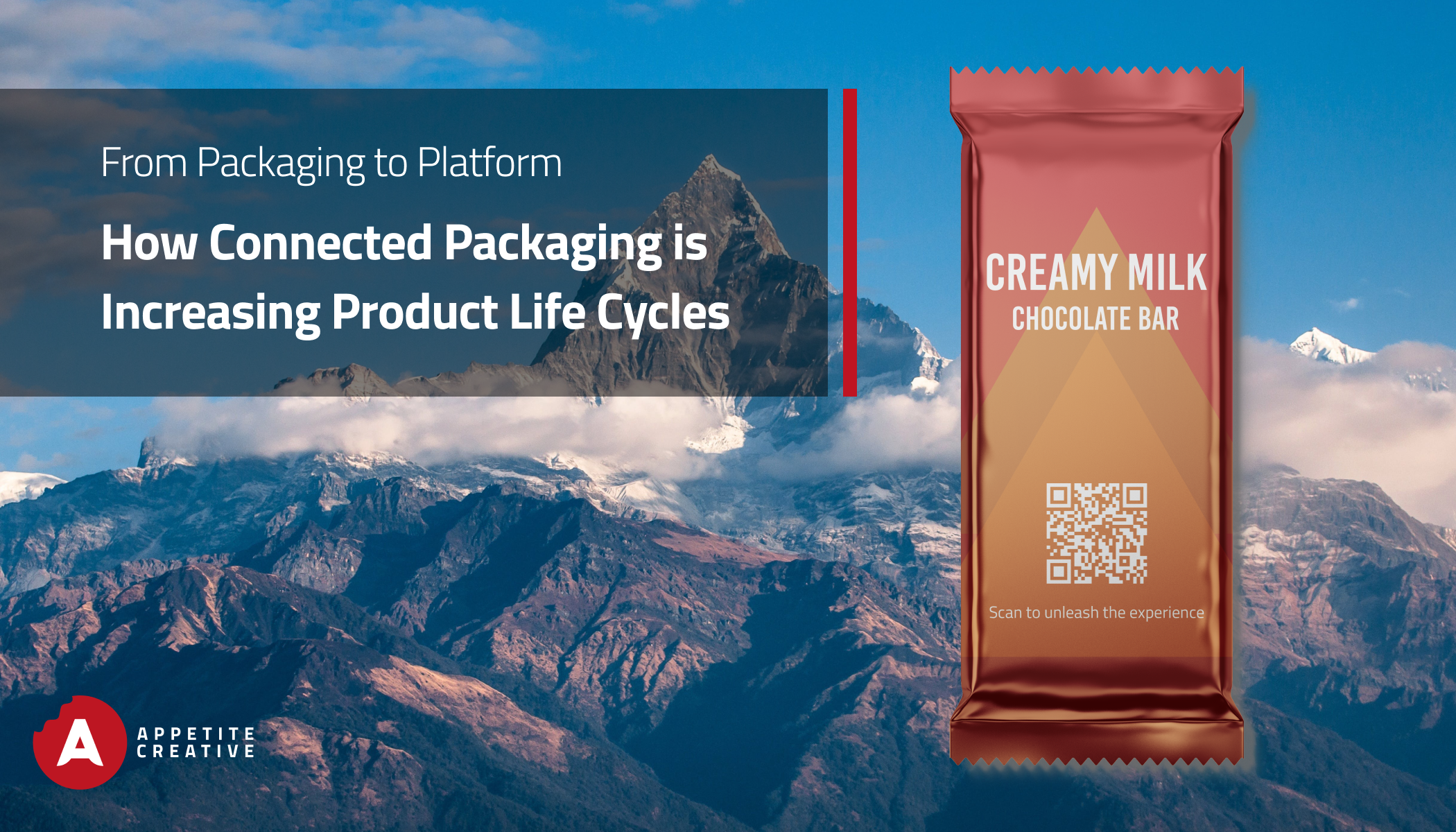
The Evolution of Connected Packaging
It is well known that extending product life cycles is good for the planet, however, its positive impact on business is often overlooked. At Appetite Creative, we’re seeing a revolutionary shift in how brands use connected packaging to transform single-use products into ongoing consumer relationships.
Beyond Basic Marketing
Connected packaging is evolving beyond its initial role as a simple marketing tool. By incorporating QR codes and NFC technology, packaging now serves as a dynamic platform. Moreover, it guides consumers through the entire product journey, from purchase to disposal.
Here and Now Applications
Take the fashion industry, for example. Leading brands are now embedding digital experiences into their garment labels. When scanned, these smart labels don’t just provide care instructions – they offer personalized styling tips, repair tutorials, and direct links to local tailoring services. This approach has shown remarkable results, with our recent client data indicating an increase in garment longevity when consumers actively engage with connected care instructions.
In the electronics sector, we’re seeing similar innovations. Connected packaging now provides, for instance, detailed maintenance guides, troubleshooting videos, and easy access to replacement parts.
Data-Driven Insights
On the other hand, the impact goes beyond individual products. Connected packaging creates valuable information flows that help brands understand how consumers use their products and where they typically encounter issues. This insight enables companies to proactively address common problems, update digital content in real-time, and continuously improve product design.
The Sustainability Impact
The sustainability benefits are particularly compelling. By providing digital access to repair information, connected packaging helps reduce the “throwaway” mindset. Our data shows that products with connected packaging solutions are more likely to be repaired rather than replaced when issues arise.
Strategic Implementation
Here’s how brands can leverage connected packaging to extend product life cycles:
- Create Dynamic User Guides: Replace static instruction manuals with scannable codes that give access to regularly updated content, ensuring consumers always have the latest product information.
- Enable Proactive Maintenance: Send timely maintenance reminders and personalized care instructions based on individual usage patterns and product age.
- Facilitate Easy Repairs: Provide direct access to spare parts, fix-it services, and step-by-step repair guides through the packaging platform.
- Build Community Support: Connect users to product communities where they can share tips and advice, as well as creative reuse ideas.
The Future of Connected Packaging
Looking ahead, we’re seeing brands integrate connected packaging with IoT sensors to provide even more sophisticated product care. Imagine packaging that can detect when a product needs maintenance and automatically guide users through the care process!
Conclusion
As a conclusion, the transformation of packaging from a passive container to an active platform represents a significant shift in how brands approach product longevity. At Appetite Creative, we’re proud to be at the forefront of this movement, helping brands develop connected packaging solutions that benefit both business and the environment.
By extending product life cycles through connected packaging, brands aren’t just reducing waste: they’re also building stronger customer relationships and creating new opportunities for engagement. The future of packaging isn’t just about protecting products; it’s about protecting their value throughout their entire lifecycle.
